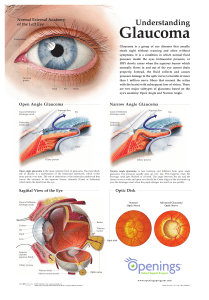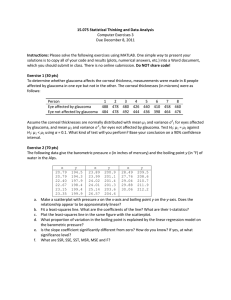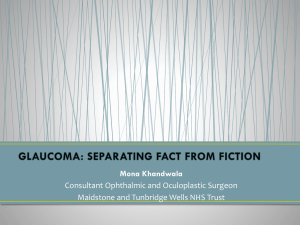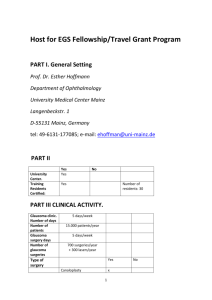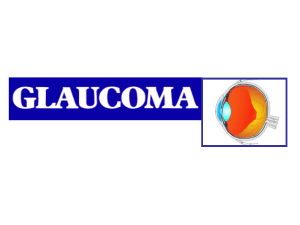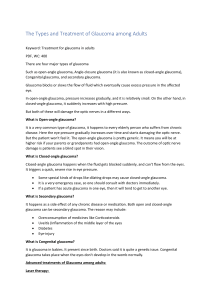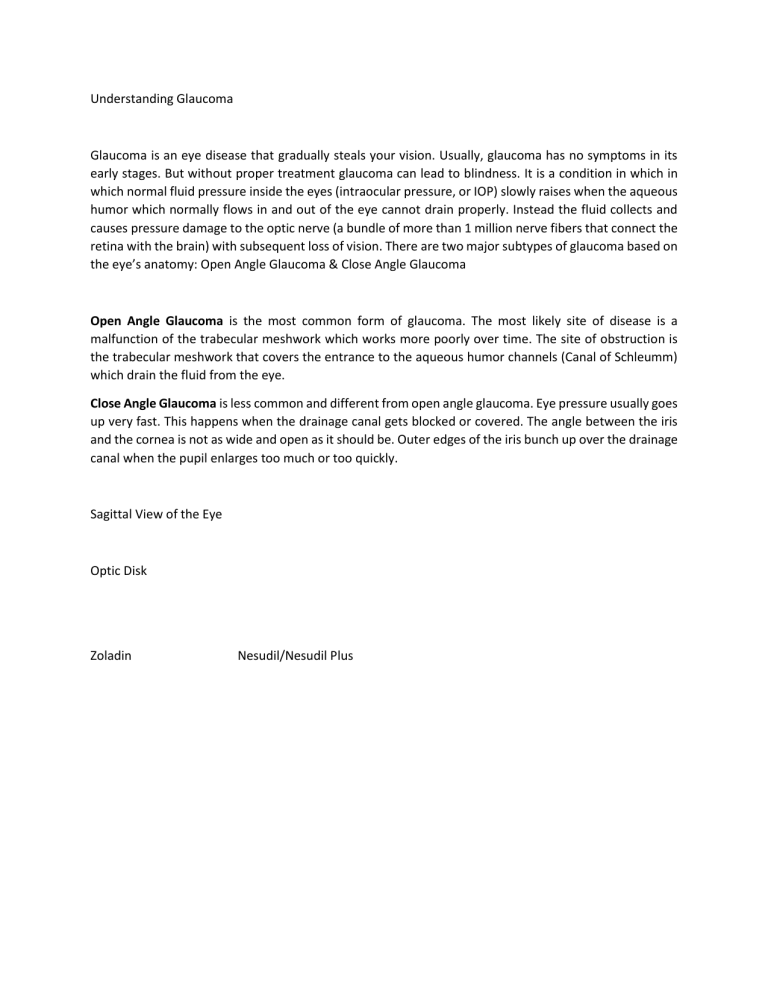
Understanding Glaucoma Glaucoma is an eye disease that gradually steals your vision. Usually, glaucoma has no symptoms in its early stages. But without proper treatment glaucoma can lead to blindness. It is a condition in which in which normal fluid pressure inside the eyes (intraocular pressure, or IOP) slowly raises when the aqueous humor which normally flows in and out of the eye cannot drain properly. Instead the fluid collects and causes pressure damage to the optic nerve (a bundle of more than 1 million nerve fibers that connect the retina with the brain) with subsequent loss of vision. There are two major subtypes of glaucoma based on the eye’s anatomy: Open Angle Glaucoma & Close Angle Glaucoma Open Angle Glaucoma is the most common form of glaucoma. The most likely site of disease is a malfunction of the trabecular meshwork which works more poorly over time. The site of obstruction is the trabecular meshwork that covers the entrance to the aqueous humor channels (Canal of Schleumm) which drain the fluid from the eye. Close Angle Glaucoma is less common and different from open angle glaucoma. Eye pressure usually goes up very fast. This happens when the drainage canal gets blocked or covered. The angle between the iris and the cornea is not as wide and open as it should be. Outer edges of the iris bunch up over the drainage canal when the pupil enlarges too much or too quickly. Sagittal View of the Eye Optic Disk Zoladin Nesudil/Nesudil Plus
